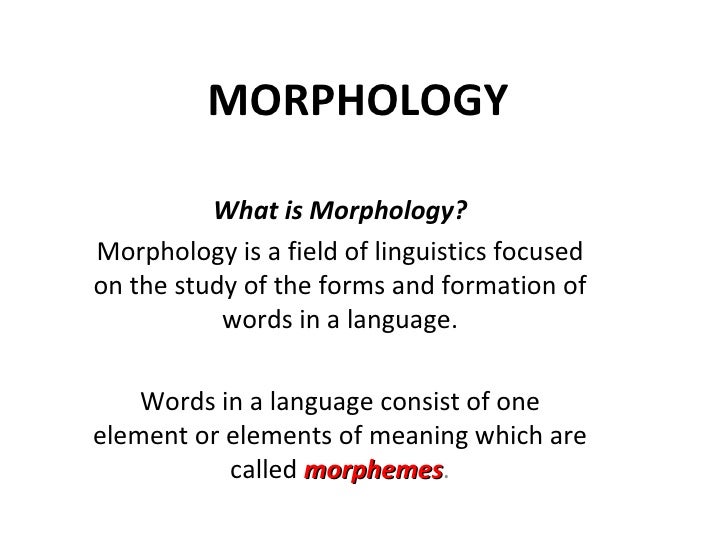Morphology is the study of words. Morphemes are the minimal units of words that have a meaning and cannot be subdivided further. There are two main types: free and bound. Free morphemes can occur alone and bound morphemes must occur with another morpheme. An example of a free morpheme is "bad", and an example of a bound morpheme is "ly." It is bound because although it has meaning, it cannot stand alone. It must be attached to another morpheme to produce a word.
Free morpheme: bad
Bound morpheme: -ly
Word: badly
When we talk about words, there are two groups: lexical (or content) and function (or grammatical) words. Lexical words are called open class words and include nouns, verbs, adjectives and adverbs. New words can regularly be added to this group. Function words, or closed class words, are conjunctions, prepositions, articles and pronouns; and new words cannot be (or are very rarely) added to this class.
Affixes are often the bound morpheme. This group includes prefixes, suffixes, infixes, and circumfixes. Prefixes are added to the beginning of another morpheme, suffixes are added to the end, infixes are inserted into other morphemes, and circumfixes are attached to another morpheme at the beginning and end. Following are examples of each of these:
Prefix: re- added to do produces redo
Suffix: -or added to edit produces editor
Infix: -um- added to fikas (strong) produces fumikas (to be strong) in Bontoc
Circumfix: ge- and -t to lieb (love) produces geliebt (loved) in German
| s | 3rd person singular present | she waits |
| -ed | past tense | he walked |
| -ing | progressive | she's watching |
| -en | past participle | she has eaten |
| -s | plural | three tables |
| -'s | possessive | Holly's cat |
| -er | comparative | you are taller |
| -est | superlative | you are the tallest |
The other type of bound morphemes are called bound roots. These are morphemes (and not affixes) that must be attached to another morpheme and do not have a meaning of their own. Some examples are ceive in perceive and mit in submit.
English Morphemes
- Free
- Open Class
- Closed Class
- Bound
- Affix
- Derivational
- Inflectional
- Root
- Affix
There are six ways to form new words. Compounds are a combination of words, acronyms are derived from the initials of words, back-formations are created from removing what is mistakenly considered to be an affix, abbreviations or clippings are shortening longer words, eponyms are created from proper nouns (names), and blending is combining parts of words into one.
Compound: doghouse
Acronym: NBA (National Basketball Association) or scuba (self-contained underwater breathing apparatus)
Back-formation: edit from editor
Abbreviation: phone from telephone
Eponym: sandwich from Earl of Sandwich
Blending: smog from smoke and fog

ليست هناك تعليقات:
إرسال تعليق